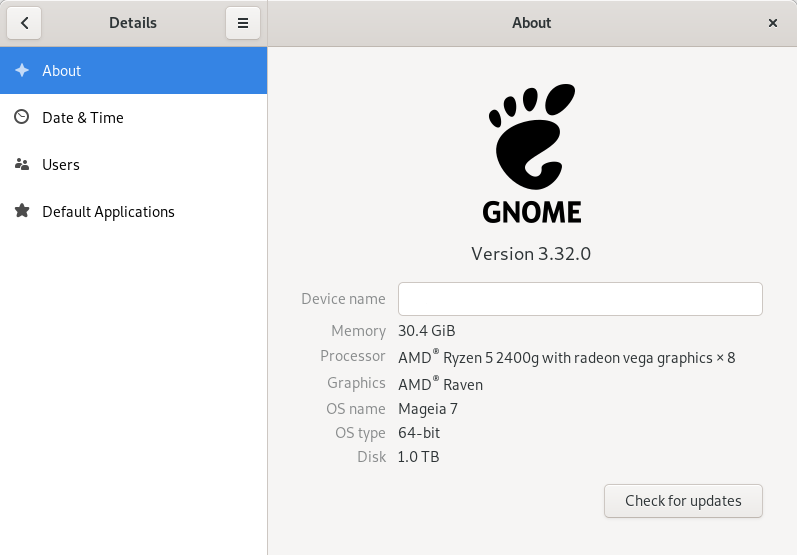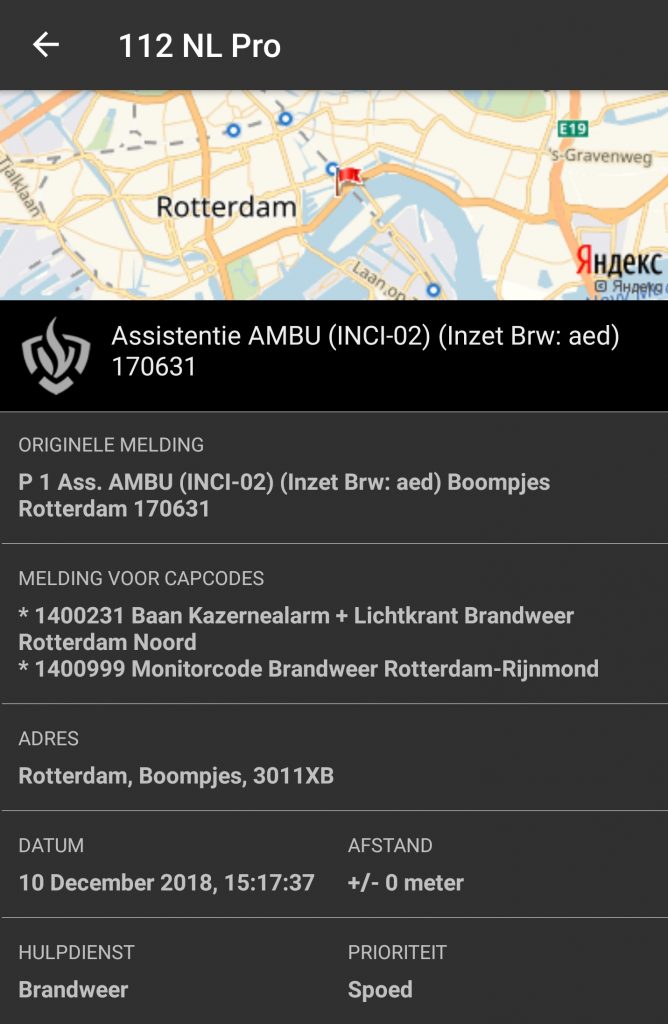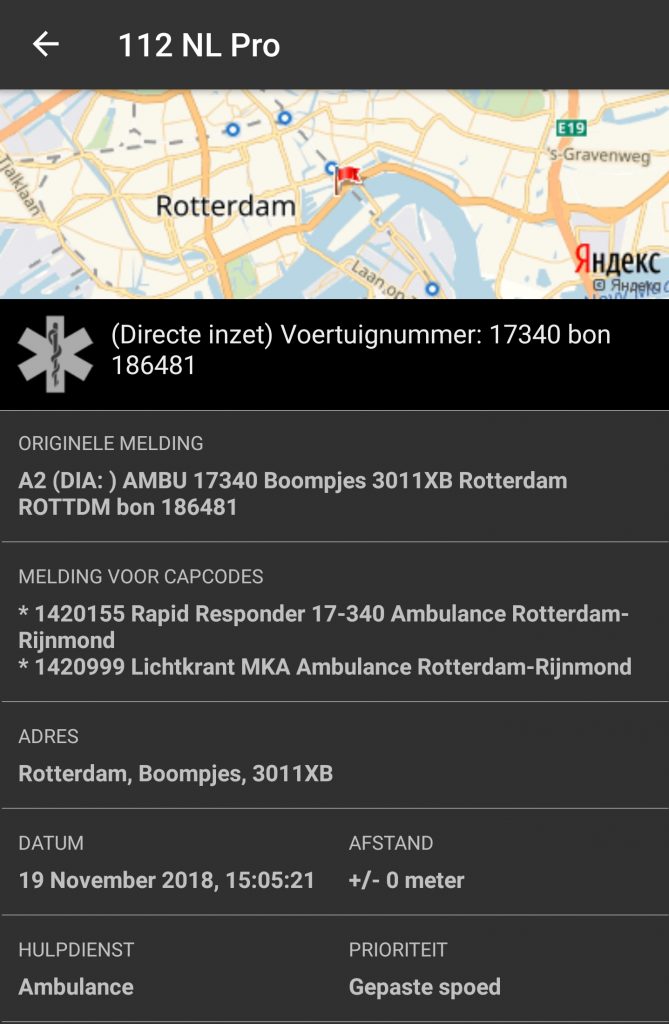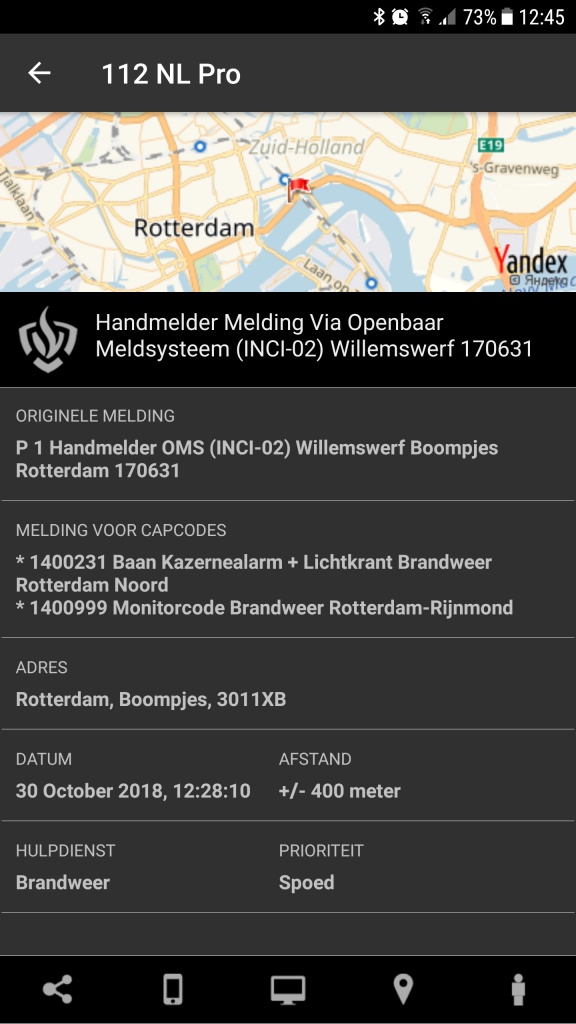Within Netherlands each company is by law required to have first responders. These handle various situations until the professionals arrive. It’s usually one of (possible) fire, medical or an evacuation. Normally I’d post this at Google+ but as that’s gone I’m putting the details on this blog. I prefer writing it down so later on I still can read the details.
Beginning of July: chest pain
On a Monday in July I retrieve my pager from security office. After chatting for a bit one mentions something about parking level 1. I head to my desk. Not 5 minutes later I hear via walkie talkie two security people discussing the need for assistance to bring “the bag” to parking level 1. This likely refers to the first aid backpack; it’s filled mostly with all kinds stuff that’s never used though it also contains an AED. The evasive way of asking for the bag probably means that they’re with the person and they’re trying to avoid any additional stress to the person. Conclusion is that the person is conscious and the security person fears an heart attack. I could either a) take an AED from my office floor and directly go to parking level 1, or b) first go to security office, pick up the bag, then walk to parking level 1. Option b is slower but is safer (though maybe I assumed too much), plus the backpack hides the AED. I confirm I’ll respond, then take a few moments to decide what to bring (phone, screwdriver, bright vest, jacket).
Arriving to parking level 1 the person is very hesitant to get any additional help. Security (first aid trained) is with the person and trying to keep him calm. Person looks off, though difficult to pinpoint exactly what’s wrong. Status is chest pain, known heart troubles. We take a moment to convince the person that help is needed (to avoid stress). Finally we’ve convinced the person that help is definitely needed.
Calling 112 was interesting and lasted 4 min 33 secs (!). I mention being at address Hertekade 35. 112 responds that they’re aware of the person in the water at Prins Hendrikkade. Wtf! I mention it’s incorrect, followed by sharing the streetname a few times more. However, the person in the water results in loads of first responders heading towards that location and right past our building. It’s pretty difficult to communicate. Eventually they ask me for the postal code. I know the one for Boompjes (3011 XB), not for Hertekade (3011 XV). Hopefully they’re the same. Turns out it’s not. Eventually the street name is known by 112. Followed by loads of questions. Eventually they mention they’re sending an ambulance. I share this via walkie talkie (“ambulance coming to Hertekade”). This as at Hertekade we can easily get the stretcher into the building, at Boompjes there’s not even a place to stand still. I overheard communication of people being directed towards Boompjes.
A few of the regulars are off on vacation. Others seem to not really respond, which is a bit off as I’m pretty sure they listen to the walkie talkie. We could send a pager, but then we’d have loads of people. Only a few are needed. I think we need to discuss that any person should always just “show up” in case they hear something no matter if they’re specifically requested or not.
Ambulance shows up and the stretcher is guided to parking level 1. The ambulance people start making jokes even before they arrive to the person; I gather they picked up me being annoyed/stressed with the whole 112 call. Oops. I try to calm down. Further, might be a good idea for the ambulance crew to play poker with regular people. 😉
Ambulance crew investigates the person and decide to take the person with them. It always mixed feelings when this happens; not nice that the person is not well, but it does make me feel good about our policy of calling 112 even when it might be a minor thing. This time they took a person, so it’s ok if another time they come for something trivial… though seems it’s usually other people calling for non-ambulance related things.
As a consequence of this incident security checked the walkie talkie relay. The communication was a bit difficult despite trying a few walkie talkies. Secondly, we need to show the postal code in all the places we have the address for 112.
What happened after
Normally I do not hear (nor ask for) anything which happens after an incident. This because of privacy; if they maybe ever tell me, ok. I won’t ask though as maybe they’d feel forced.
Various months after above incident I heard that the person went home and was still at home. Needing to convince someone that it’s ok to call 112 results while actually it was a really serious impact to their life.
Security mentioned they heard another person also who went to 112 in another country, also chest pain. That was around the same time as the incident I responded to. The other person (in the other country) was so serious they didn’t allow him to move out of that country (too big of a risk). As a result, the person was also out for months.
Yearly evacuation
End of September the yearly evacuation drill was held. I was on vacation during that time. Another very experienced first responder was also not in the office. The evacuation seemed to go pretty much ok. Apparently it took one group a while to figure out how to use the walkie talkie. I’m pretty happy with this; I tried before to do a bit less during a drill so others could learn.. but not acting is quite difficult.
The drill included two “fake” people who pretended to have a medical emergency. One pretended to have trouble walking, the other was shaking on the ground (seizure). These were handled well. We have quite a few first aid trained people who usually (and unfortunately) do not participate in the evacuation drill. Hopefully they’ll participate in future.
Medical emergency
On the day of this incident I was chatting with security. They mentioned that the goods elevator was out of order. Normally that would be a very critical to the building as the goods elevator is also the elevator used by the fire department. No working elevator apparently means the building cannot be used. Since a few years, the building setup another elevator to be usable by the fire department (emergency power and some other stuff). That other elevator is much more of a hassle due to the way less convenient location and lack of accessibility from the road. The goods elevator is perfect for either fire department and especially great for ambulances.
The medical emergency happened during lunch. I had my pager with me but not my walkie talkie. My pager didn’t go off so I missed the entire thing. The reception within the building is poor, so there’s 11 signal boosters within the building to ensure a good reception. As a result the pager range outside of the building is pretty impressive. It’s the first time I managed to not receive a page, despite having the pager on me. The range is easily 1 or 2km.
A person in the building forgot to take some pills. As a result the situation deteriorated so much that a) taking the pills wouldn’t be enough b) they could only be helped by 112. The person informed the first responders within the company. They gathered, called 112, then security as well. Security asked for assistance via walkie talkie. After not getting a quick response they sent a pager. Another really active first responder works for the same company as the person needing 112. That first responder ran from their lunch back to the building when he was the pager going off. Meanwhile, the other first responders were pretty much ready.
Once the ambulance arrived they were taken to the relevant floor using the goods elevator. The elevator mechanic worked all morning to fix it; he fixed it and less than 10 minutes later security got the medical emergency call.
Security apparently had nothing to do and sent a picture of goods elevator camera to me as well as a first responder colleague (same one who missed the evacuation drill). I guess this was mainly to make fun of us missing an incident, we’re both are quick to respond to any incident.
Strange smell
Via the walkie talkie I heard security talking about a strange smell. I heard one of the security guys going up to investigate. As I was not busy with work, plus it’s been a while since I had to respond to an incident I mentioned I was joining (why ask if you can tell).
We checked the area itself, various ventilation shafts, different floors, etc. There’s some renovation going on but security already checked those and the work was already stopped an hour before. We checked those floors again but couldn’t find anything. I tried a few tricks to
What might’ve happened is that the smell took quite a while to reach the other floor. Within a big building the air doesn’t really go from one floor to another. It might first go to air filtration system, then eventually to another floor. Those floors might not be close to each other. To properly investigate you need knowledge on which floors are on the same air filtration system.
Security specifically mentioned multiple times to multiple people that they’re really happy to investigate and despite not finding anything to please keep calling no matter if they’re not sure. This is similar to us always calling 112 even if we’re in doubt.
Person stuck in elevator
On October 31 (“Halloween”) first responders had their yearly refresher training. This time I arranged space (2 combined meeting rooms) for this. The first responders are from various companies. By hosting the training at my company I get the benefit of additional first responders who have knowledge of our office layout. This as the layout can differ hugely per floor and/or company. I warned the trainer and most of the first responders that we would have a party starting 16.00 and that it might get a bit loud.
The party was for Halloween (not common to do in my country). Late in the afternoon the first responders somehow got notified that someone was stuck in an elevator. Interestingly, one of the first things they did is try and contact me. I forgot my walkie talkie and didn’t notice. They also tried my phone, but with lots of loud talking, didn’t notice. So a few went out of the meeting room and responded. Thereby passing me.
The person was stuck on a level without any outside doors (this building has an “interesting” design). The person was also very stressed, they called various times within 5 minutes. Normally we’d stand outside and calm them down. In this case you couldn’t really reach. In the past building security would override the elevator and move it manually (similar to an elevator mechanic). They’ve been trained on how to do so by elevator mechanics. But due to an incident security stopped doing this. Mostly because they want to know who is responsible in case they make a mistake. The lack of any answer results in security limiting themselves to some basics.
Security raised an priority incident with building management, which included details about the stressed person inside. Building management immediately raised an incident to yet another company. Eventually that other company raised it with the elevator mechanics company. The elevator mechanics were quite unhappy with the amount of delay. For one it’s wasted time, secondly they were initially quite close by.
Stuck elevator
The day when I went home I noticed security at the elevators. Apparently an elevator was stuck. I joined security to respond. No notification was performed on either the pager or via walkie talkie. As I was leaving the office I also didn’t have any walkie talkie with me.
I joined security to the elevator maintenance room. Apparently there’s even an indicator light nowadays to determine if the elevator is exactly at a floor level. If the elevator is not exactly at a floor level there’s a chance that the person would try to get out and fall down the elevator shaft. Security already checked the elevator and saw that nobody was inside (that or unconscious).
Security first turned on the elevator shaft lights, then turned off the power. After that we went down to where the elevator was. The elevator doors were still close together (maybe 1 cm apart). Normally if there was a person inside they’d immediately respond to the doors “unlocking” by pushing the doors open. Strangely the inside lights were off. Turning off the power usually still keeps the lights inside the elevator on.
This was the day after a person was stuck in an elevator. Apparently the day before first this elevator got stuck, then later in the day the other elevator got stuck with the person inside. The security person who had the evening shift (and not a regular) was a bit nervous as a result and went over the procedure with the other (regular) security person.



